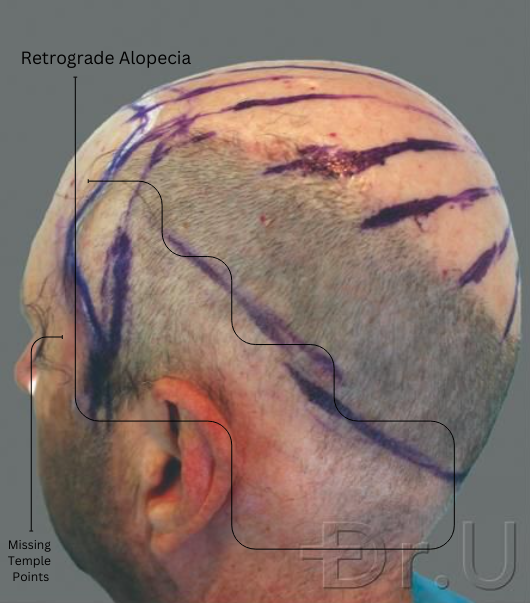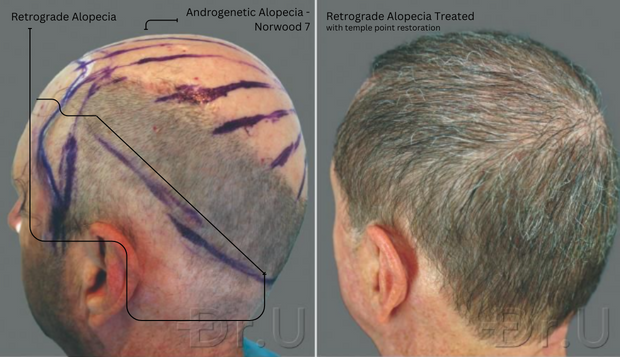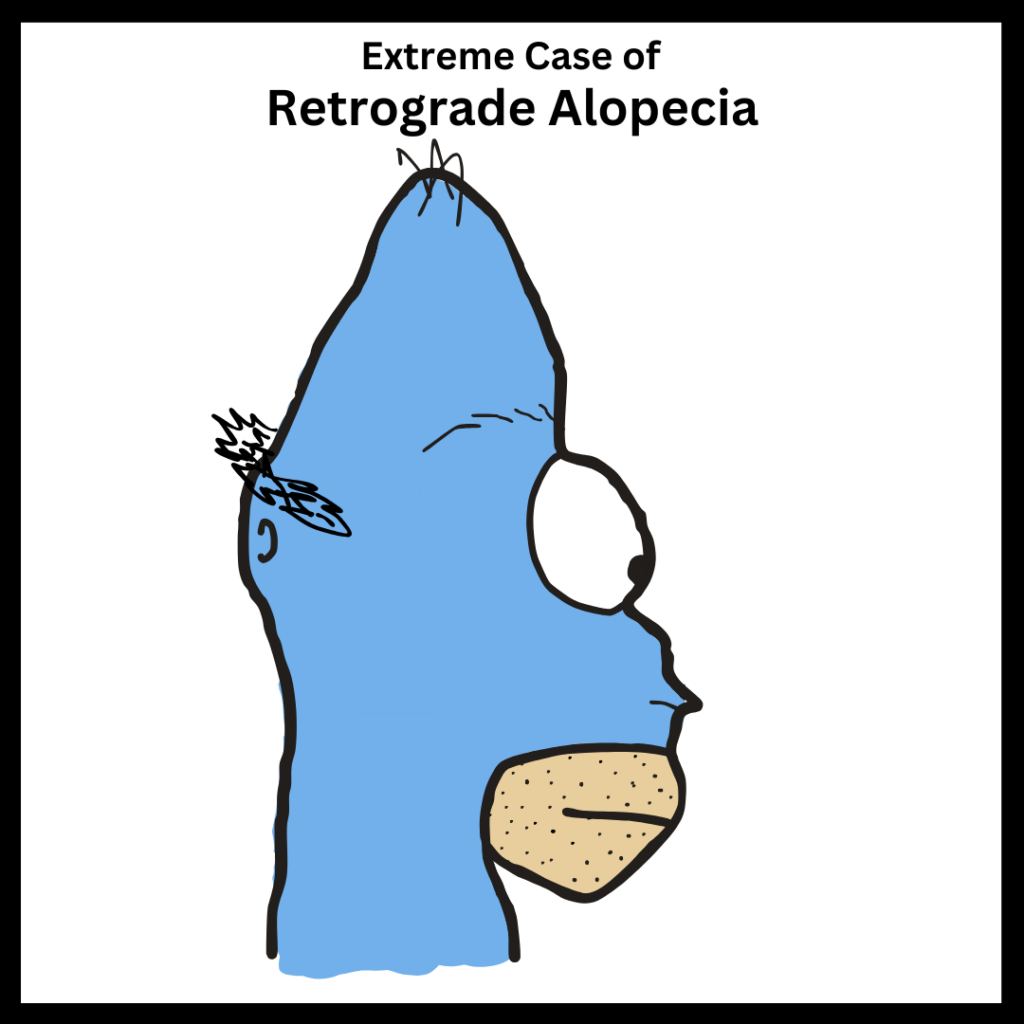Hair loss, an affliction that touches the lives of many, manifests in various forms. Retrograde alopecia is a distinct challenge, particularly in the intricate landscape of male pattern hair loss. So, what is retrograde alopecia? What are its symptoms? What are its associations, and how does it develop?
Defining Retrograde Alopecia: A Closer Look at Symptoms
Retrograde alopecia (RA) is characterized by a unique pattern of hair loss, particularly around the hairline at the neck and temples. Key symptoms include gradual thinning, halted hair growth in the affected area, and localized loss at the back or side of the head, potentially extending to the occipital region.
RA is closely connected to Androgenetic alopecia (AGA), resembling the typical male pattern hair loss. However, it differs from AGA as it involves factors beyond DHT and is not an inflammatory hair loss condition.

Distinguishing Features and Misconceptions: Retrograde Alopecia vs. Other Hair Loss Conditions
Spotting retrograde alopecia is challenging because it looks like other types of hair loss. Its unique location at the back or side of the head distinguishes it from conditions such as alopecia areata or some types of scarring alopecia.
Unlike the commonly used Norwood (NW) Scale for measuring male pattern baldness, retrograde alopecia doesn’t fit in. It needs specific recognition and labeling, especially when combined with severe NW 7 or Norwood 8.
One Man’s Battle with Retrograde Alopecia
Dealing with severe NW 7 baldness and retrograde alopecia, the patient faced years of struggle to find a solution. Despite setbacks, he had limited options.
“I waited a considerable amount of time to see if the technology would get to a level that would work for me. My condition was so extreme that nothing out there existed, so my search was at least ten years before I decided to do something. Because why do something unless it’s got a high probability of success?”
However, he found hope with the UGraft Zeus FUE device, known for its precision and versatility. I had the privilege of using this technology to restore his hair, making him the first documented case of retrograde alopecia recovery. The patient was extremely impressed with the coverage he achieved.
“… this had the highest probability [of success], and the probability manifested in the results. I’m happy. This is quite an impressive result, I’d say. I would do it again”, he reported in his testimonial.
An important aspect of RA is the loss of hair in the temples, which this patient experienced. Remarkably, we successfully restored his temple points through FUE surgery, a usually challenging task in severe baldness cases. This framing of his face resulted in a natural, more youthful appearance.

Scalp Preparation: A Fundamental Step for Successful Hair Transplants in Retrograde Alopecia Treatment
Preparing the scalp before a hair transplant is crucial for the best results in treating RA. Before the procedure, we concentrate on nourishing and stimulating the scalp, boosting blood circulation, and improving overall skin health. These actions create an environment that supports the successful integration of transplanted hair follicles.
https://www.youtube.com/watch?v=xmUk7Kp0ACI
Bridging the Knowledge Gap and Advocating Recognition
Retrograde alopecia, with its distinct symptoms, is noticeable in hair loss. Recognizing its nuances is vital for accurate diagnosis and personalized treatments. It’s crucial to advocate for its inclusion on the Norwood Scale to ensure individuals dealing with it get the attention and customized solutions they need in their journey to regain confidence and hair.
Notable Mention: Homer Simpson – an Example of Fully Progressed Retrograde Alopecia
Homer Simpson is a well-known case of RA, showing hair loss at the temples and the back of the head. This iconic character illustrates how RA is portrayed in popular culture, highlighting its significance and influence.

In a world where characters like Homer Simpson visually represent RA, real-life cases provide a deeper understanding of its challenges. Our patient was approaching the level of baldness seen in the famous cartoon character. Fortunately, he found a solution to halt that progression and treat his existing hair loss.
Frequently Asked Questions
Is retrograde alopecia a common condition?
Retrograde alopecia, though not widely recognized, is prevalent in the general population. This is mainly because it isn’t categorized and labeled in major systems like the Norwood Scale.
Are there specific risk factors or predispositions associated with the development of retrograde alopecia?
Although the exact causes of retrograde alopecia are not apparent yet, we know it’s not an inflammatory condition and that there is more going on in the scalp than sensitivity to DHT.


